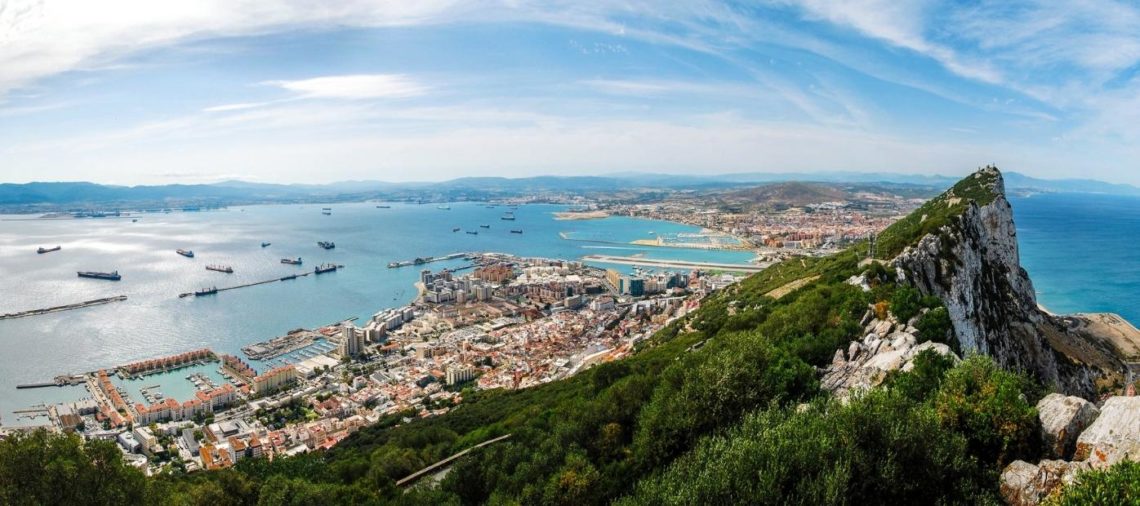Gibraltar. Since we were kids, we got acquainted with this name, to which the geography textbooks put forward another word – Strait – and then send it to the gallery of significant places that we remember for the rest of our lives. The Strait of Gibraltar, which separates Europe from Africa and the Mediterranean from the Atlantic, is one of the first geographical landmarks that I remember.
I never heard anyone say, “Let’s go on holiday to Gibraltar.” Although, now that I have visited it, on my way to Morocco, I might not find it so strange to wish you spend some days on this rock. Even if we’re talking about a British mini-territory stuck in the coast of Spain since 1713, when, following the Treaty of Utrecht, it was given over with great and regrettable ease to the British.
Gibraltar can be visited in a few hours, being a place that leaves you with such a pleasant taste that you seriously think about seeing it again next time because you imagine you missed something, especially since the weather conditions are always very good. And even if Gibraltar probably can’t surprise you every day, and spice up a full stay, my recommendation is not to miss it if you are on the Costa del Sol, near Malaga, Marbella or if you prepare to jump the “slope” of the Strait, to Tangier and the wonders of Morocco. From my one day experience, let’s find out what to see and what to do in Gibraltar:
Creation of Hercules
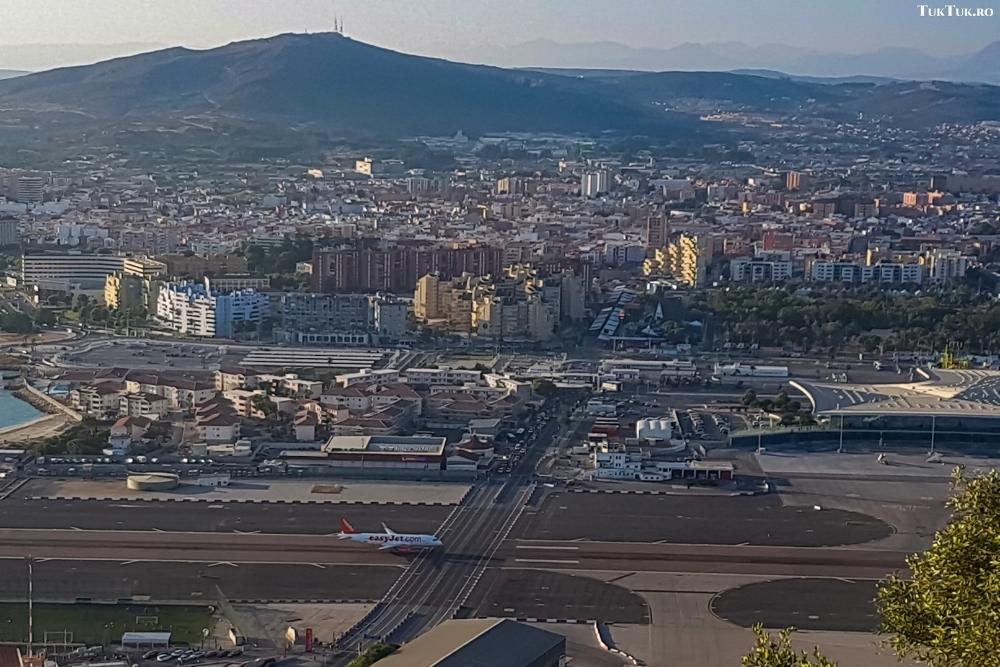
Take a night of accommodation in La Linea, the Spanish city that borders the British land, and, the following day, head to the border, do the formalities (as at any customs) – attention, sometimes it can be crowded! – then drive to the town at the foot of the rock, taking care of the planes. Yes, the runway at Gibraltar airport crosses the main road (the only one), which takes you to the city, along an isthmus connecting the rock to the mainland. So, if you hit during a landing, you’ll be waiting minutes at the barrier until the pilot lands the plane.
The name of Gibraltar comes from Arabic. Jabal Tariq – Mount Tarik, in honor of Tariq ibn Ziyad, the moor who captured the peninsula in 711 from the hands of the Spanish Visigoths, who had conquered it, in turn, 300 years earlier. But Gibraltar has a much older history. And the Phoenicians were the first to step in and populate this place, somewhere around 950 B.C. Monsignor Calpe – this is how they baptized him, considering him one of the two pillars of Hercules, following the Greek legend related to the formation of the Strait between Europe and Africa.
A walk through the old town of Gibraltar
Homer, one of the first storytellers of the world, told us – the romantic version – how the Strait came into being after Hercules got upset one day and crushed the mountain connecting Europe to Africa. This is how the two pillars appeared – one on our continent, the limestone rock of Gibraltar, rising to 426 m above the sea – the other on the African: Jebel Moussa, in Morocco.
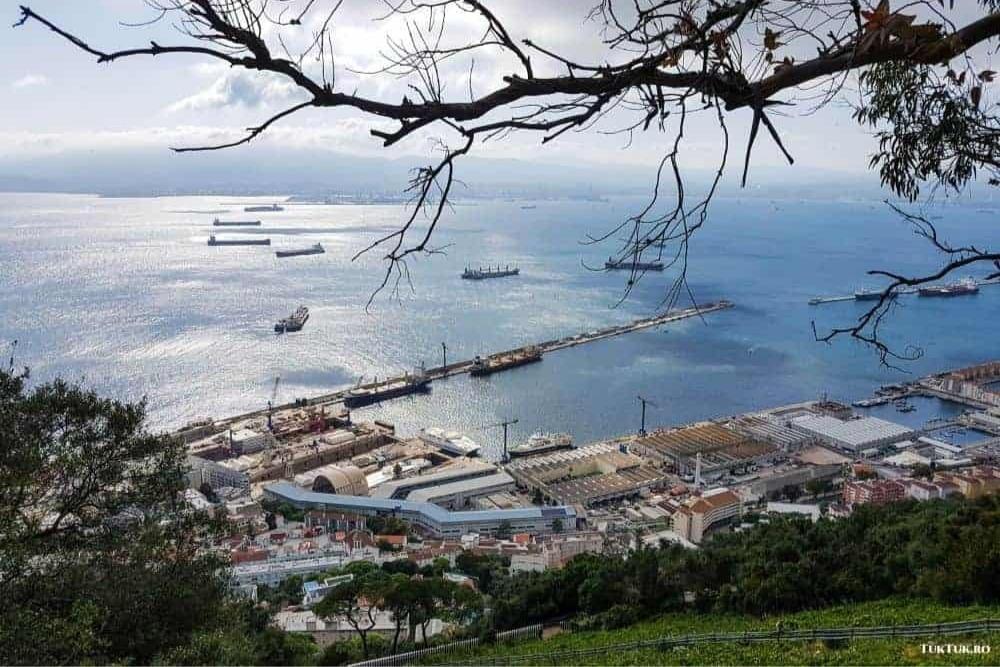
So, good luck with this strong, ungracious boy who left the world a rock marvel. Today, Gibraltar is 5.8 square kilometers and has about 30,000 people. What nation are these? Hmmm. Officially, they’re British. Because Gibraltar is an autonomous British territory, even if the Spaniards do not like that, and have made several attempts to change the fate of the little peninsula over time. Two referendums were held. The first one, you read something below, and in the 2002 one, the Gibraltarians were asked if they would agree that Spain and the United Kingdom have joint control. The answer was NO! A 98.4% NO.
The military and strategic importance of Gibraltar in the last two hundred years could not make the inhabitants of today vote differently. They are called Gibraltarians, a mix of Genoese, British, Spanish, Maltese, Jewish, and Portuguese, to which Moroccans and Indians add in a quiet Babylonia. In Gibraltar, the official language is English, but people also speak Spanish and a strange dialect called Llanito, a combination of Spanish, Genoese, and Hebrew.
And, to finish with history and finally get to what to do and see in Gibraltar, we cannot get over the fact that during the Second World War, the civilian population of Gibraltar was evacuated, being sent to London also to Morocco, Madeira, and even Jamaica. The rock became a fortress, and the warships sweeping through it played an essential role in supplying Malta in those hard times when it was besieged.
After the war, in the 1950s, the Spanish dictator, Franco, also rolled the dice, trying to regain the sovereignty of Gibraltar. However, the referendum of 1967 was disastrous, with the Gibraltarians voting for the British breast. Upset, Franco closed the border in 1969, so suddenly Gibraltar was forced to “communicate” until 1982 (partially) and 1985 (totally, before the entry of Spain in the E.U.), only by water and air.
Main Street and Grand Casemates Square, in Gibraltar
So you cross the airfield, Winston Churchill Avenue, in the act of mandatory bravery, and you first get to the old town, to start with the beginning and convince yourself that the “country” thing is as serious as possible. First, you will see that many buildings and offices of institutions are built per square meter, in architectural cramping reminiscent of Monte Carlo, without the finesse of the Riviera, but only the need to expand on a patch of land once empty but already overloaded.
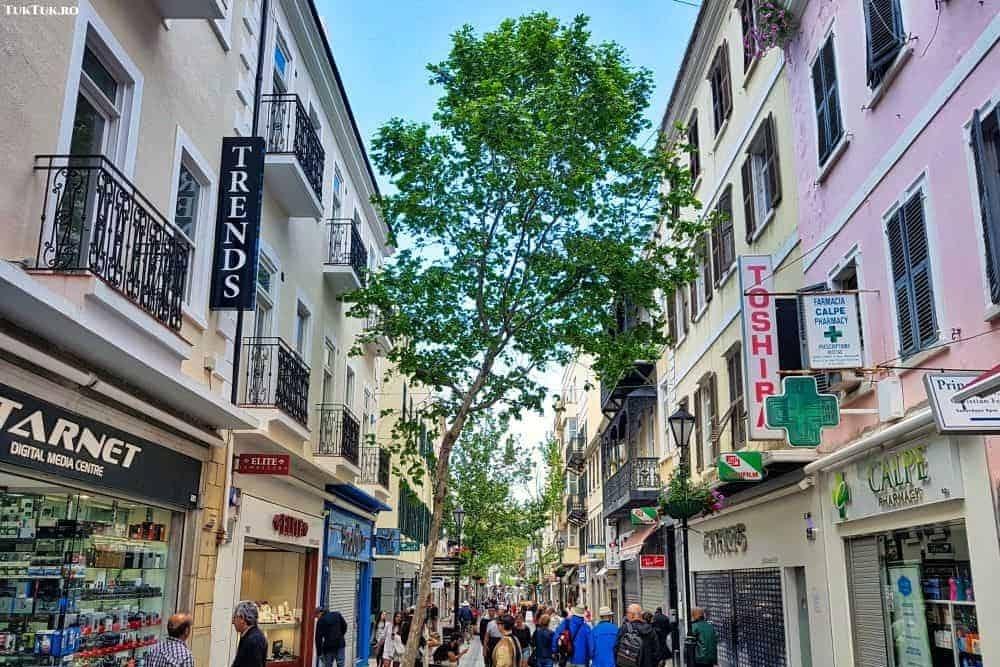
Gibraltar is not the best place for drivers. If you look at Google Maps, you’ll see that the territory is tiny. And the total length of roads does not exceed 30 kilometers. Once landed in the huge parking lot near the old town, you step by step, climb a few stairs and instantly get on an elegant pedestrian artery, along which locals and tourists walk in a sprawling lighthouse dolce.
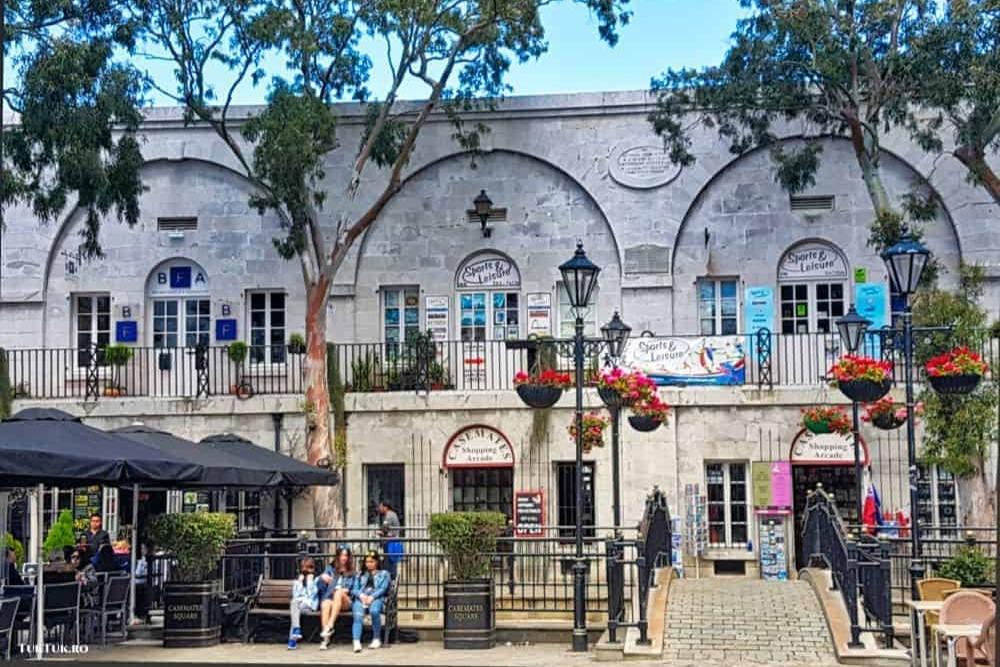
It’s Main Street and, call it a lack of inspiration, that’s the real name. There are shops of all kinds on this artery bordered by interesting buildings, which stretch from Casemates Square to Southport Gates, and you can stop, if you get tired of your steps (unlikely) in a pub or restaurant, to eat a steak. Shopping enthusiasts will enjoy these stores in a duty-free regime, with reasonable prices for specific products. I understand that porcelain and crystal sell a lot. You can buy in euros and dollars but pay attention to the exchange rate because the prices are in pounds.
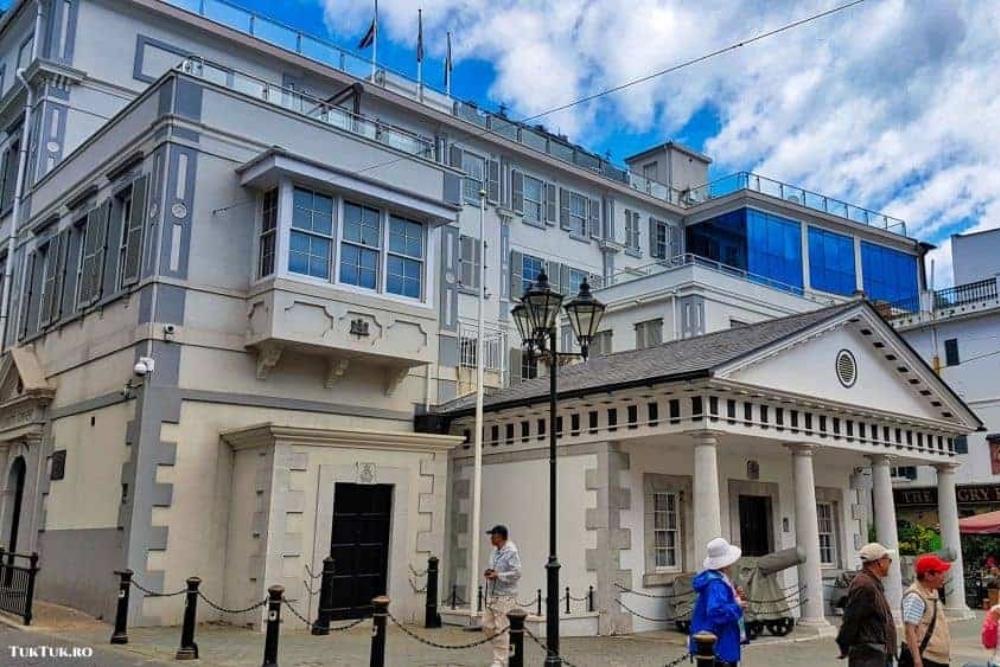
And it’s not just the pounds that are reminiscent of the U.K. but also the famous London phone booths or the red mailboxes. But don’t imagine the old town is London in miniature. Instead, it borrowed some of the elegance of Marbella, the famous luxury resort only 80 km away. It’s not a Great Britain with the sun, but it’s a melange of Andalusian culture with English essence, topped with Portuguese, Maltese, Maori, and Ligurian additions.
Casemates Square, located in the northern part of Main Street, draws its name from the barracks built here in 1817. If you want to relax, here is the area to go to because here you will find the highest concentration of cafes, bars, and restaurants, built on the edges of the place where public executions were once held. Cultural events, the National Day parades all take place here, the new year’s arrival is celebrated here, and, in general, you can call Casemates Square the heart of Gibraltar.
From the lighthouse to the cave
After an hour of chatting up and down Main Street, probably you’d like to see something else. The best way is to take a tour that will take you from the lighthouse to the rock, to St. Michael’s Cave. There are a lot of tours, and I would recommend that you study them carefully, because each of them can be very interesting.
Because of the limited time, I made this one, but you can do the tour that explores the tunnels of the Second World War. Or the one that includes a cable car ride. Or, why not?, the one who has in the foreground the Berber macaques, the famous monkeys that surround the rock of Gibraltar.
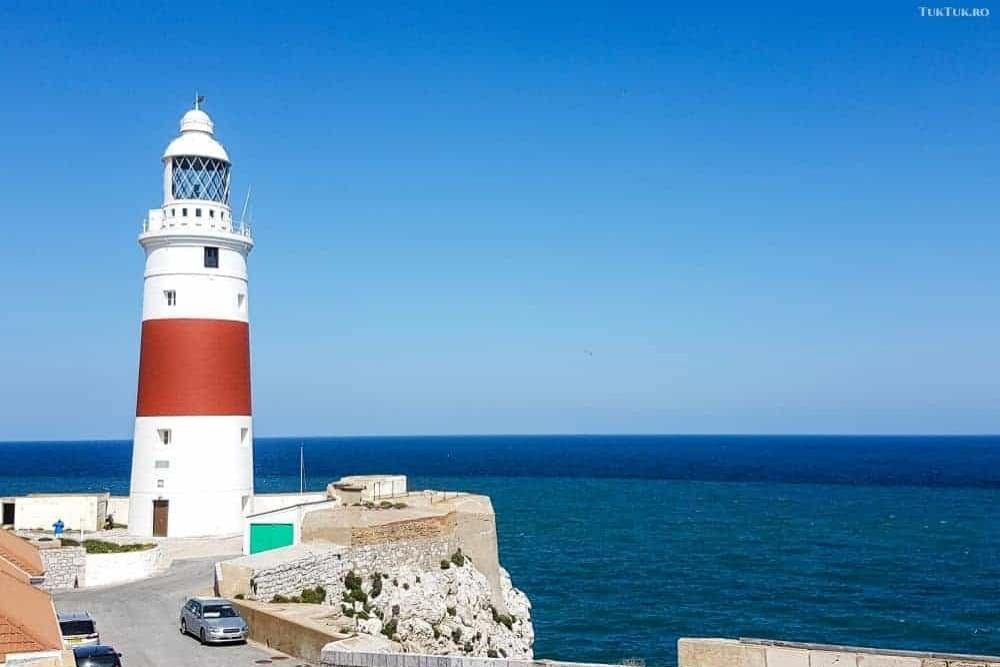
Until this, I first enjoyed the view of the lighthouse in Europa Point place. The Gibraltar Trinity Lighthouse, which is the Lighthouse of the Holy Trinity, dates from 1841 and has a height of 49 m, with a coverage radius of about 37 km. Close to it is the Sikorski Memorial, built on 12 January 1945, relocated to Europa Point on 4 July 2013, and financed by the Polish state, tells about General Vladislav Sikorski, the Prime Minister and former commander of the Polish army in exile, between 1939-1943, a symbol of resistance against the Nazis and of all the Polish people dreaming of regaining independence. His connection to Gibraltar is that the general lost his life in a tragic plane crash when his plane tried to take off from Gibraltar in 1943.
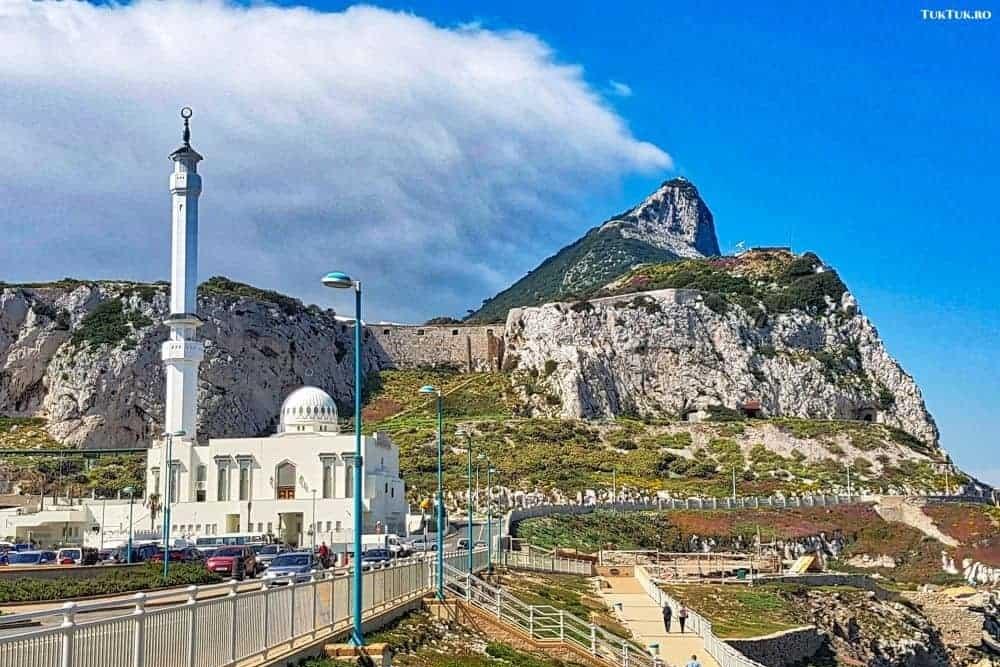
While you’re windy enough in Europe Point, you’ll find time to admire the beautiful Ibrahim al Ibrahim mosque, an excellent example of Islamic architecture, paid (in 1997) from the money of King Fahad Abdul Aziz of Saudi Arabia and given to the Muslims of Gibraltar. A lot of Moroccans arrived here in 1969 after General Franco closed the borders of Spain with Gibraltar; today the British territory is inhabited by a large Islamic community, for which the mosque has special significance.
I then climbed the rock, in the minibus of the tour, led by an old Englishman, with a big belly and a decent beard, who was at the same time on the guide and whose British accent was rather similar to the comment of a football game.
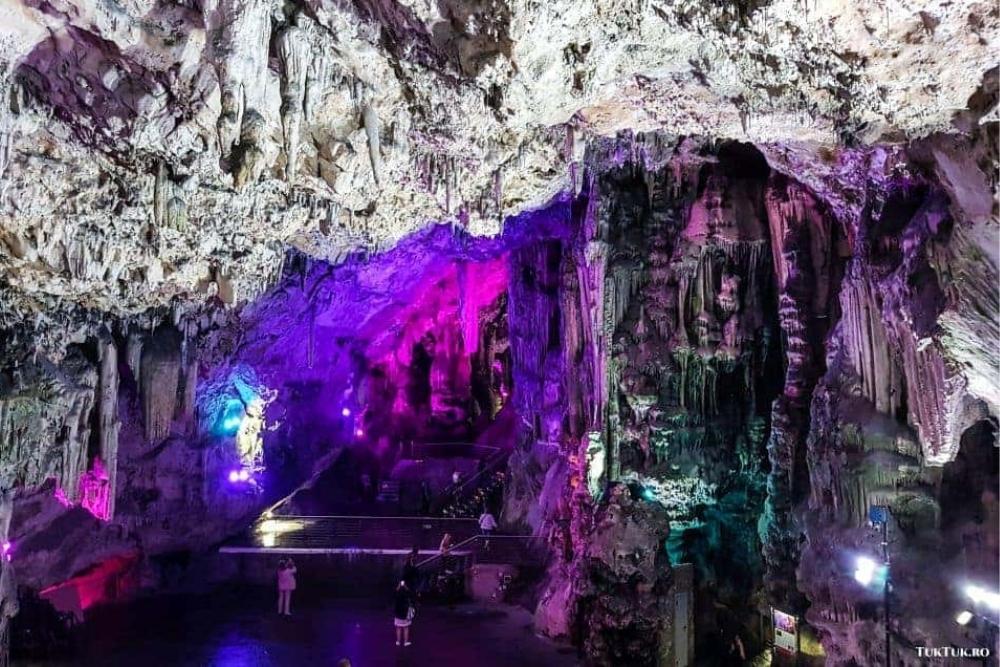
St. Michael’s Cave. For a long time, people believed that practically the cave does not end anywhere. This is one of the reasons why this legend has emerged – that the rock of Gibraltar is bound to Africa by an underground passage passing under the Strait. It has also been said that the famous macaques would have arrived in Gibraltar precisely through this passage, and to be even more shrouded in mystery, Pomponious Mela, one of the first geographers who lived in the area at the beginning of Christianity, wrote in his works about the cave and its uncontrollable depths.
In time, the cave has served the most diverse purposes. It was arranged as an emergency hospital during the Second World War, but no sick or injured people arrived here. It is said that in 1704, Spanish troops spent a night in the cave after climbing the steep slope of the rock. We find another story about Colonel Mitchell and another officer, who entered the cave around 1840 but were never seen again afterward. Since the early 1960s, the cave has been used as a theater, housing up to 600 people.
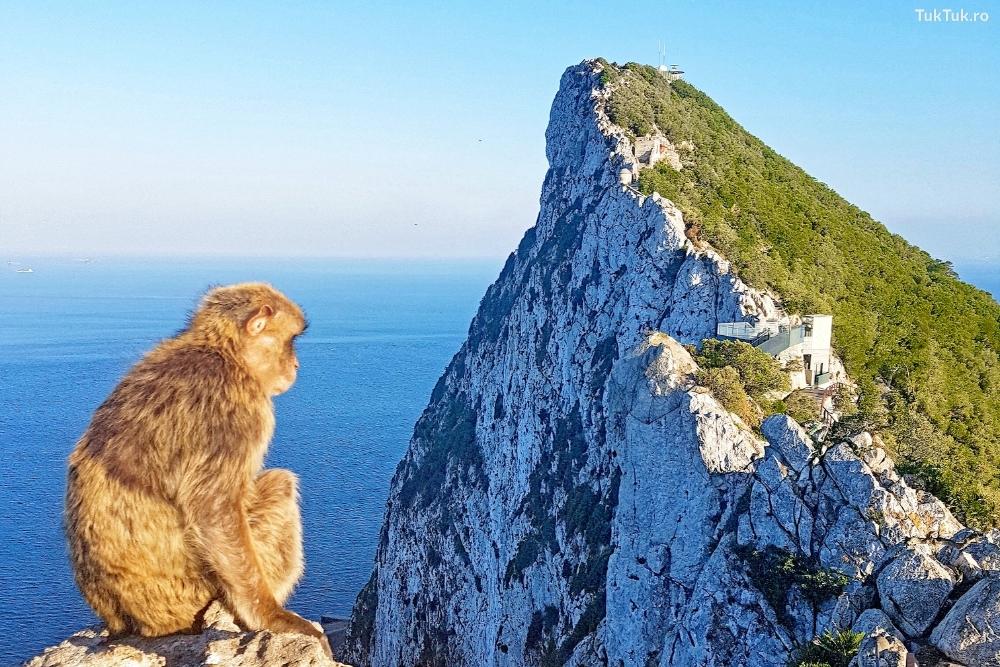
Today, the cave is spectacularly landscaped, having a game of lights that emphasizes thousands of years old stalagmites and stalactites, turning the visit into a pleasant experience. And on the way out, the Berber macaques, smaller or larger, can’t wait to play with them. Or take advantage of your lack of attention and steal something from you. There are about 300 monkeys that spread across the top of the rock. Remember, this is the only wild monkey species present in Europe.
The bottom line is that, although the monkey population in Africa decreases every year, the macaques in Gibraltar (which the locals call Monos) breed. And sometimes they go down to the city and steal or produce damage. They act like the rock belongs to them: they are relaxed, interact with tourists, and no wonder they are considered the main attraction of Gibraltar. How long have they been here? It seems they were here even before the rock came into British possession. In 1704, the chronicler Alonso Hernandez del Portillo mentioned their presence in the early 17th century.
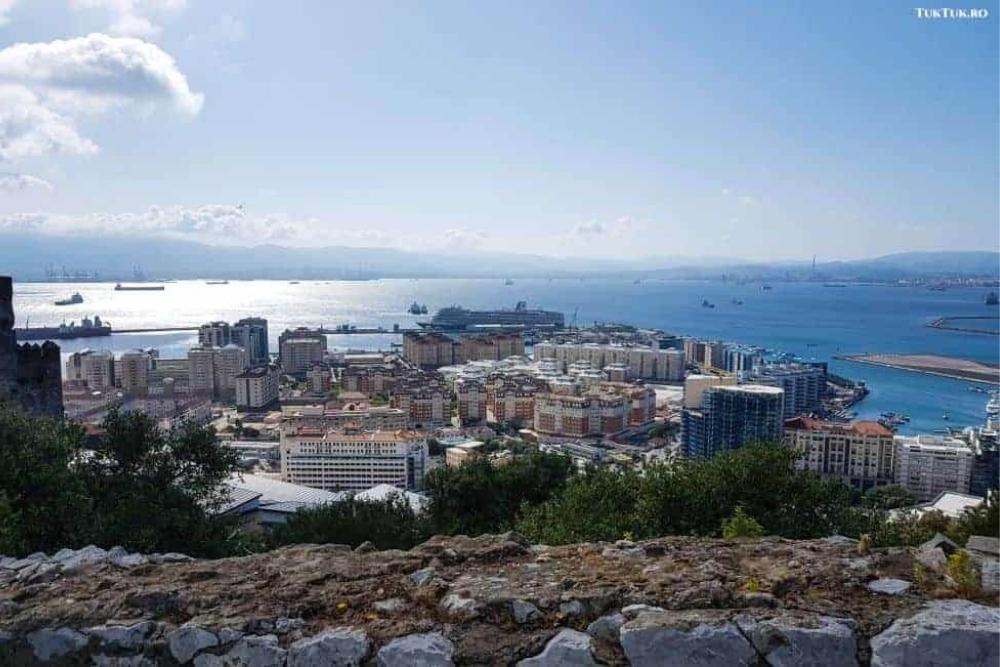
I didn’t spend much time in Gibraltar (later edit: I was to come back in a few months and went into depth) and, because of that, I did not see everything. If you visit Gibraltar, do not miss the underground tunnels, built by the British army at the end of the 18th century, but also during the Second World War, the Moorish castle, originally built in 1160 (after some mentions, even earlier), Sky Walk (the road arranged on the top of the rock, from where you get a sensational panorama) and the botanical garden. Gibraltar is a special place with a remarkable history and a charm that should not be overlooked.
You may also like: 10 places to see in Palermo, the capital of Sicily

